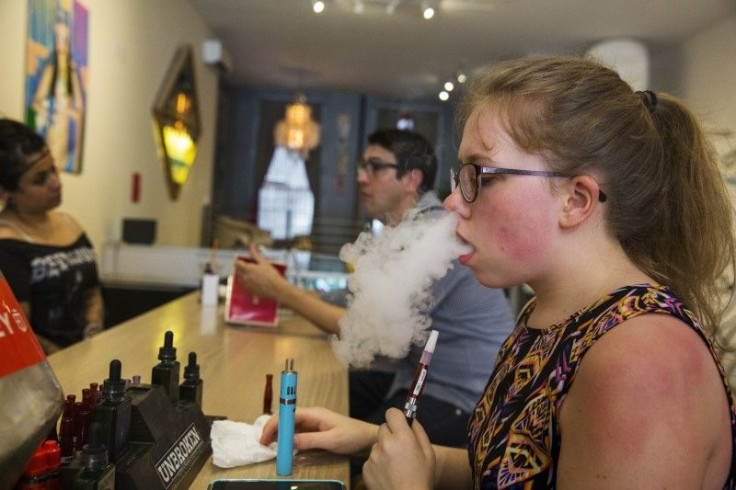Cartoon Ads Do Promote Vaping to Teens

E-cigarette cartoon ads on social media platforms frequented by teenagers and young adults get more “likes” than ads that don’t, according to a new study by researchers at the University of California’s Keck School of Medicine. “The promotions that come out of e-cigarette companies are meant to be appealing to young people using the same playbook that the tobacco industry has been using for decades,” Jon-Patrick Allem, PhD, one of three authors of the study, told Medical Daily.
The research, published online July 20th in JAMA Pediatrics, is the latest in a series of studies Allem and his colleagues have conducted on the use of cartoons in e-cigarette marketing. The team’s first paper was published in 2017 just as e-cigarette use, more commonly known as vaping, among young people started trending up. That trend has continued. According to the CDC, (Centers for Disease Control and Prevention), 27.5% of high school students were vaping, a 7% increase over 2018.
Social Media
The study culled data from several social media platforms but relied most heavily on Instagram because of its popularity among young people and because it is the most visual. The researchers wanted to find out if colorful cartoon ad images got more attention from site visitors than e-cigarette ads without cartoons.
“The answer is yes,” said Allem, an assistant professor of research and director of the Social Analytics Lat at the Keck School of Medicine. “Posts with cartoons received more “likes” or levels of user engagement than similar posts without cartoons." According to the study, ads with cartoons were liked nearly twice as much as those without.
He continued. "We are starting to build a case that cartoons are a popular form of marketing among the e-cigarette companies. We can identify over 100 companies that are using cartoons in their marketing and, or, have cartoons in their logos.”
According to the study, posts that contained a popular hashtag #ejuice were collected, or scraped, from Instagram, between Aug. 22 and Sept. 12, 2019. Of the 1936 posts that were still public when the researchers assessed them, 142, or 7.3%, contained a cartoon. 1608 of the 1936, or 83.1%, were determined to be promotions.
Using cartoons in their ads and logos, Allem explained, allows companies to build brand identification online and offline. When young people on social media see the cartoons, he says, they like them and become engaged. “So, it goes beyond this kind of passive consumption to a more active consumption.”
Not a New Strategy
Tobacco companies targeting adolescents, teens, and young adults using cartoons isn’t new strategy, Katie Foss, PhD, said in an interview. Foss is a professor of Media Studies at Middle Tennessee State University and editor of “Beyond Princess Culture: Gender and Children’s Marketing.” In 1988, for instance, the RJ Reynolds Tobacco Company, owner of Camel cigarettes, introduced the cigarette smoking cartoon character, Joe Camel. The Joe Camel campaign drew public criticism for enticing children to smoke. Nevertheless, the ad ran for nine years.
“It’s about starting to expose children to these particular brands so that when peer groups start to vape or start using e-cigarettes, they are already familiar with brands and therefore will turn to that brand,” she said. But, she added, it is also a way of making e-cigarettes seem innocent and less dangerous so that when the opportunity arises, teens and young adults are more likely to try vaping.
Companies that sell vaping materials contend that the goal of their products is to help adult cigarette smokers quit. Neither Allem nor Foss buy into that marketing ploy. A CDC study found that 60% of teens who vape prefer fruit, menthol and mint flavors. “I think the introduction of flavors in itself just says this is not for an older adult crowd,” Foss said. “That says youth all over it.”
Added Allem, “Well, if that’s true, then you don’t really need a cartoon to get a grown man in his 50s or 60s to stop smoking. A cartoon isn’t going to make a difference.”
Telling teens and young adults to stop vaping because it is dangerous will not work, Foss said. Both she and Allem would like to see federal, state, or local legislation passed banning e-cigarette companies from using cartoons. Short of that, Foss believes the same education program and social pressure that got cigarette commercials banned could work again. “And we can do that through health messages in school,” she said. “But even more importantly, we need to use the same social media channels that these companies are using to counteract their message.”



























